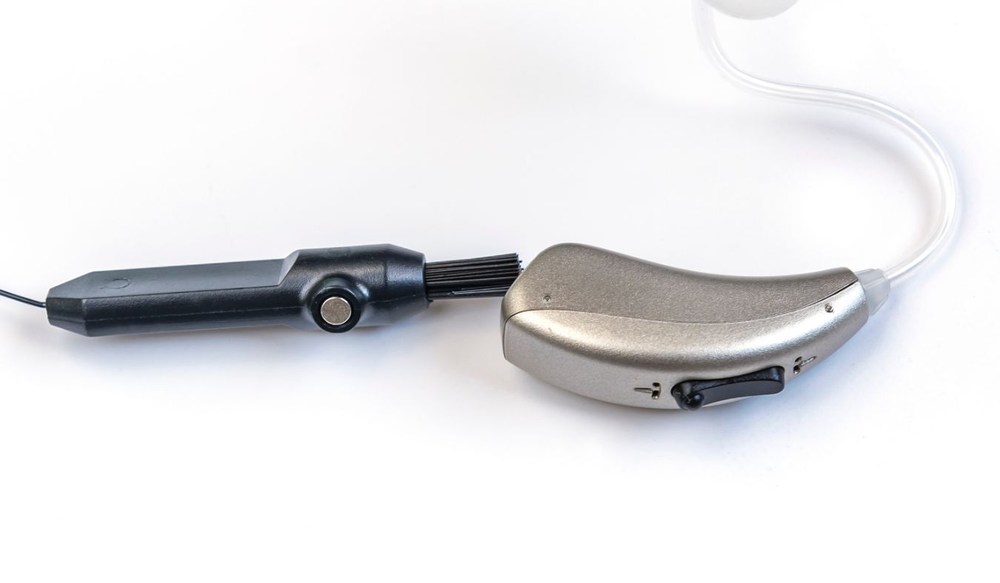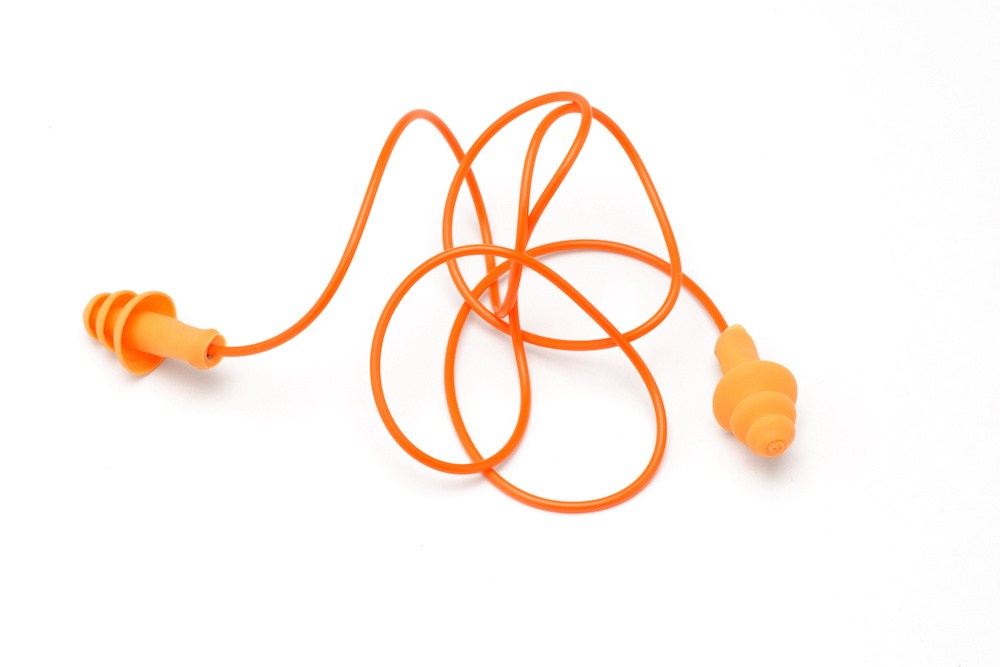How to Protect Your Hearing During Fall Festivals
Fall festivals bring plenty of fun, from outdoor concerts and craft fairs

By: admin | September 24, 2025
Hearing aids today are nothing like the bulky, whistling devices you might remember from years past. If you haven’t looked into hearing aids recently, you’d be surprised by how much they’ve changed. Modern hearing aids can automatically adjust to different environments, connect wirelessly to your phone and even learn your preferences over time. They’re smaller, more comfortable and increasingly able to handle complex listening situations without you having to manually adjust settings or worry about feedback. What used to require constant tinkering now happens seamlessly in the background.
The next wave of hearing aid technology is taking personalization even further. Manufacturers are developing devices that can do more than just amplify sound – they’re creating systems that adapt to your daily routines, anticipate your needs in different settings and integrate with other technology you already use. This shift toward smarter, more intuitive hearing aids reflects a broader trend in healthcare technology, where devices become partners in managing your health rather than just tools you have to manage.
Hearing aids have come a long way from the early days when people relied on ear trumpets or horns to hear better. Those first devices were essentially funnels that channeled sound into the ear, offering only modest help and making daily life a bit more challenging for people with hearing loss. In the 1920s and 1930s, electronic hearing aids using vacuum tubes began to appear. They amplified sound more effectively, but they were heavy and awkward to carry around, making them difficult to use consistently.
The introduction of transistor technology in the mid-20th century changed things for the better. Hearing aids became smaller, lighter and easier to wear, shifting from large body-worn units to behind-the-ear models. These analog devices allowed wearers to adjust amplification based on their needs, helping them follow conversations more clearly, though background noise was still a challenge. Improvements in battery life, microphone quality and materials also made them more practical for everyday use.
Digital technology has transformed hearing aids in the last few decades. Modern devices can analyze sounds in real time, focusing on speech while reducing background noise, and they often include features like Bluetooth, rechargeable batteries and multiple listening programs for different environments.
This makes hearing aids feel much more like personal tools that adapt to the way people live rather than simply amplifying everything around them. Today’s hearing aids let people engage in conversations, enjoy activities and stay connected without thinking constantly about their devices.
Smart hearing aids are becoming increasingly popular as people look for solutions that fit seamlessly into their daily routines. Many wearers appreciate how these devices make life easier, offering convenience and comfort that goes beyond basic amplification. Surveys suggest that around 80% of people using hearing aids with advanced features report greater overall satisfaction compared to those with simpler models.
As more people seek hearing solutions that fit their active, connected lifestyles, the market is responding with innovations that make wearing hearing aids feel less like accommodating a medical device and more like using helpful technology. This includes features like Bluetooth streaming, automatic noise adjustment and rechargeable batteries that allow wearers to hear phone calls or TV shows directly through their devices without extra equipment.
The growing interest in smart hearing aids also reflects broader lifestyle trends. People want devices that keep up with their busy days, integrate smoothly with other technology and reduce the daily hassles of managing hearing challenges. This rising demand has led to more options that feel approachable, practical and aligned with the way people live today.
Recent technology has made traditional hearing aids smaller, lighter and more comfortable. Many people are surprised by how powerful and easy to wear these new devices are. Modern hearing aids now offer Bluetooth streaming for calls, music or TV audio. Rechargeable batteries mean you can simply charge your hearing aids overnight and have a full day of use. Automatic noise adjustment helps you hear better in busy places without needing to change settings yourself.
Assistive listening devices have also become more effective, making it easier to hear clearly in noisy settings. For those with more severe hearing loss, cochlear implants may be discussed as an option by your doctor. These advances help ensure the right solution fits into your daily routine and keeps you connected.
Smart hearing aids now include features designed to support your safety and independence. Many models have built-in sensors that track physical activity, monitor balance and detect falls.
Some devices offer voice commands, language translation and reminders for medication. These features go beyond hearing support and help you manage your overall well-being each day.
Wireless connectivity has greatly expanded what hearing aids can do. With Bluetooth and other wireless features, many modern BTE hearing aids connect directly to smartphones, tablets and TVs. This allows you to stream sound straight into your ears with less background noise.
Wireless connections also make it easy to adjust settings using apps on your phone. Some devices even allow our team to make changes remotely, so your hearing aids can be fine-tuned without an office visit. These advances help your hearing aids fit seamlessly into your daily life.
Rechargeable batteries have made using hearing aids much simpler. Instead of replacing small batteries often, you can charge your devices overnight and have reliable power all day.
This reduces the need for frequent battery changes and the worry of your hearing aids stopping unexpectedly. Many people appreciate this feature because it makes using hearing aids more convenient and dependable.
Automatic sound adjustments are one of the most helpful features in today’s smart hearing aids. These devices can sense changes in your environment, like moving from a quiet room to a noisy restaurant, and adjust settings automatically. This reduces the need for manual changes each time you enter a new place.
Automatic adjustments offer smoother listening in different situations, though you may still want to make manual changes occasionally if the device does not get it exactly right.
Smart hearing aids and assistive listening devices now use advanced features like directional microphones and noise reduction to help you hear speech more clearly in busy places. These improvements make it easier to follow conversations at restaurants, family gatherings or other noisy environments.
Bluetooth streaming allows you to enjoy music, podcasts and phone calls directly through your hearing aids with clear sound and less background noise. You can watch TV or talk on the phone without needing extra headphones or turning up the volume for others.
When considering Bluetooth features, check if your hearing aids connect to your smartphone or TV, allow hands-free calling and make it easy to switch between audio sources. Simple controls for adjusting volume or changing settings can make entertainment and communication more enjoyable.
Many smart hearing aids now include advanced sensors that help track your health and wellness. Some devices can monitor physical activity or check your balance. These features can make a difference in your daily life by providing useful health information.
Sensors in many BTE hearing aids can count steps, measure movement and sometimes detect falls. This information can help you and your healthcare team keep track of important health details without needing extra devices. Some hearing aids also remind you about medication or track how often you wear them each day.
Many of the latest hearing aids now include safety tools like fall detection and alerts. These features use sensors to notice sudden movements or changes in position that could indicate a fall.
If a fall is detected, some devices can send an alert to a family member or caregiver so you can get help quickly if needed. This added safety support provides peace of mind for both you and your loved ones.
Connecting your hearing aid with smartphones and other digital products can make daily life much easier. With Bluetooth and wireless features, you can stream phone calls, music or directions from your GPS straight to your hearing aids for clearer sound wherever you go.
Some people find setting up these connections challenging at first. Using step-by-step guides from hearing aid manufacturers or asking our team for help during a fitting appointment can make the process easier so you get the most out of these features right away.
App controls for hearing aids give you more ways to adjust your listening experience in real time. With a few taps on your smartphone, you can change volume, switch programs or fine-tune settings for different environments.
These app controls work much like a remote for your TV, allowing you to make quick adjustments easily and quietly. This helps ensure your hearing aids match what you need at any moment, whether you are in a quiet room or a noisy restaurant.
When choosing a smart hearing aid, consider your daily activities and the environments where you spend most of your time. Some devices work better in noisy places, while others are designed for easier streaming from phones or TVs.
Battery life is important, especially if you prefer rechargeable options. Comfort and fit also matter since you will likely wear your hearing aids for many hours each day. Features like health tracking, fall detection and app controls can add extra value depending on your needs. Choosing the right smart hearing aid means finding the features that match both your lifestyle and hearing goals.
Smart hearing aids continue to open new possibilities for better hearing and greater control over daily life. With features like Bluetooth streaming, rechargeable batteries, health tracking and automatic sound adjustments, these devices offer more convenience and support than ever before. As technology advances, finding a solution that fits your unique needs and lifestyle remains important.
If you have questions about smart hearing aids or want guidance on choosing the right device, our team at Bay Area Hearing Care Professionals in St. Petersburg, FL is available to help. Contact us by calling (727) 202-4330 to learn more about the latest technology and how it can support your hearing goals.
Tags: assistive listening devices, hearing aid styles, hearing aid technology

Fall festivals bring plenty of fun, from outdoor concerts and craft fairs
By: admin | November 18, 2025

Hearing aids today are nothing like the bulky, whistling devices you might
By: admin | September 24, 2025

Music does more than entertain us – it marks our important moments,
By: admin | May 23, 2025
